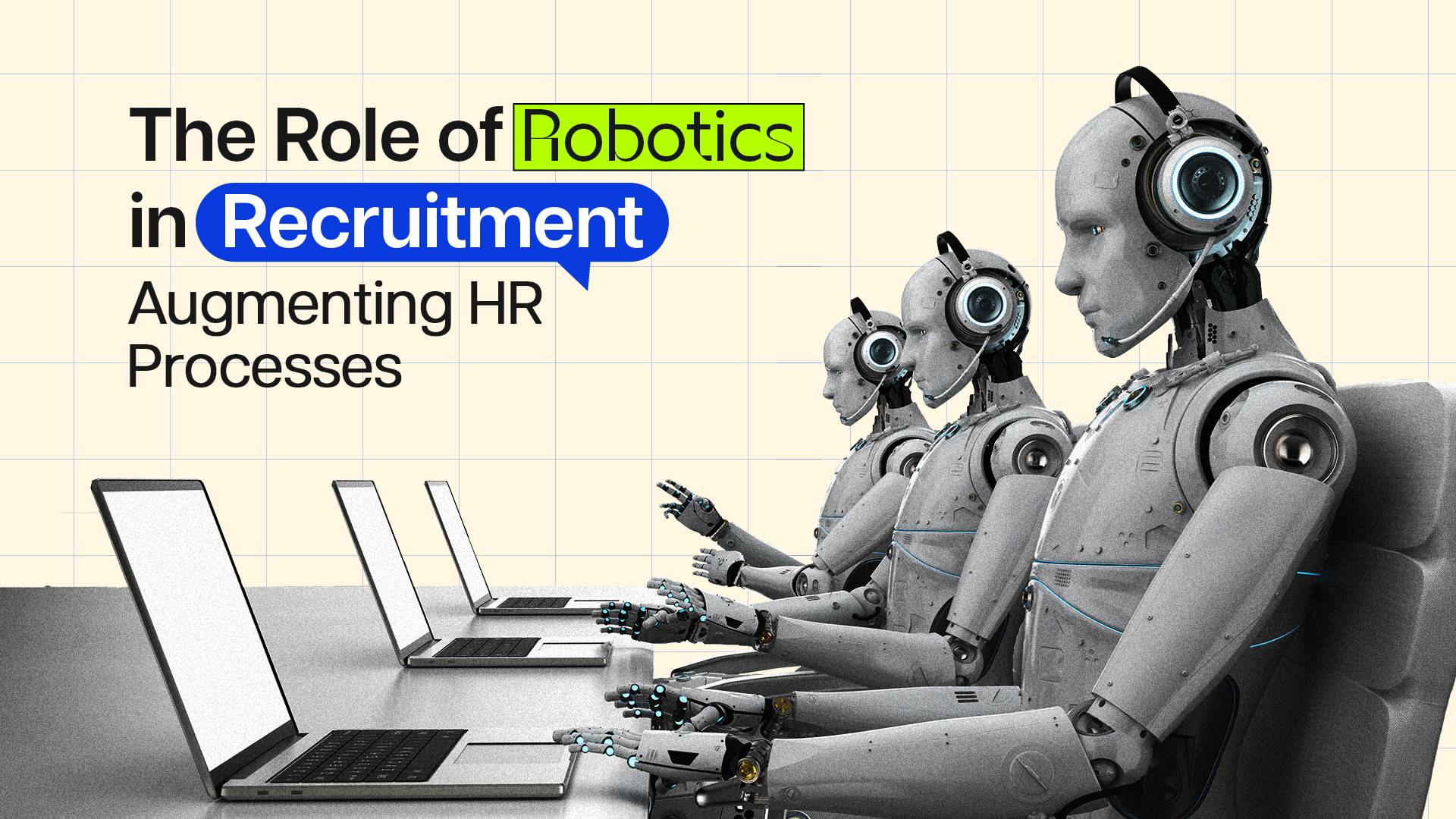The recruitment landscape is constantly evolving, and one of the most transformative advancements in recent years is the integration of robotics in HR processes. Robotics, powered by artificial intelligence (AI) and automation, is revolutionizing the way organizations approach talent acquisition.
From streamlining administrative tasks to enhancing candidate experiences, robotics is augmenting HR processes, improving efficiency, and shaping the future of recruitment. In this blog post, we will explore the significant role of robotics in recruitment and its potential to revolutionize HR practices.
I. Streamlining Administrative Tasks:
Robotic Process Automation (RPA) has emerged as a game-changer in recruitment by automating repetitive administrative tasks. From resume screening and application tracking to data entry and compliance checks, robots can process large volumes of data quickly and accurately. This allows HR professionals to focus on strategic decision-making, candidate engagement, and building meaningful relationships.
II. Enhanced Candidate Experiences:
Robotic technology is reshaping candidate experiences, providing timely and personalized interactions throughout the recruitment journey. Chatbots and virtual assistants powered by AI are available 24/7 to answer candidate queries, provide status updates, and guide them through the application process. By offering immediate responses and tailored experiences, robots improve candidate satisfaction and strengthen employer branding.
III. Unbiased and Consistent Assessments:
One of the critical challenges in recruitment is unconscious bias. By leveraging AI algorithms, robots can conduct assessments and evaluations without bias, ensuring fair and objective candidate evaluations. With standardized criteria and consistent analysis, robots contribute to creating a more diverse and inclusive workforce.
IV. Data-Driven Decision-Making:
The integration of robotics in recruitment allows organizations to harness the power of data. Robots can collect, analyze, and interpret vast amounts of candidate information, providing valuable insights to HR professionals. Data analytics enable evidence-based decision-making, allowing organizations to identify patterns, trends, and success factors in their hiring processes. This information can further optimize candidate selection, improve the quality of hires, and predict future hiring needs.
V. Collaborative Workforce:
Contrary to popular belief, the rise of robotics in recruitment does not replace human involvement. Instead, it creates a collaborative workforce where humans and robots complement each other’s strengths.
HR professionals can leverage robots to handle repetitive tasks and administrative duties, freeing up time for strategic thinking, relationship building, and more meaningful interactions with candidates. This partnership between humans and robots augments HR processes, leading to increased productivity and innovation.
VI. Future-Proofing HR Practices:
The adoption of robotics in recruitment is a proactive step towards future-proofing HR practices. As technology continues to advance, organizations that embrace robotics gain a competitive edge in talent acquisition. By staying abreast of emerging technologies and leveraging robotics, HR teams can adapt to changing market dynamics, attract top talent, and drive organizational success.
Conclusion:
The role of robotics in recruitment is not merely a trend; it is a transformational force reshaping HR processes. By automating administrative tasks, enhancing candidate experiences, enabling data-driven decision-making, and fostering collaboration between humans and robots, organizations can achieve greater efficiency, accuracy, and innovation in their talent acquisition efforts.
Embracing robotics in recruitment is a strategic move towards a future-ready HR function, ensuring organizations are well-equipped to navigate the ever-evolving talent landscape.
Join the robotic recruitment revolution and unlock the potential of robotics in augmenting HR processes. Embrace innovation, improve efficiency, and secure a competitive advantage in the race for top talent.
Are you ready to shape the future of recruitment with robotics?










